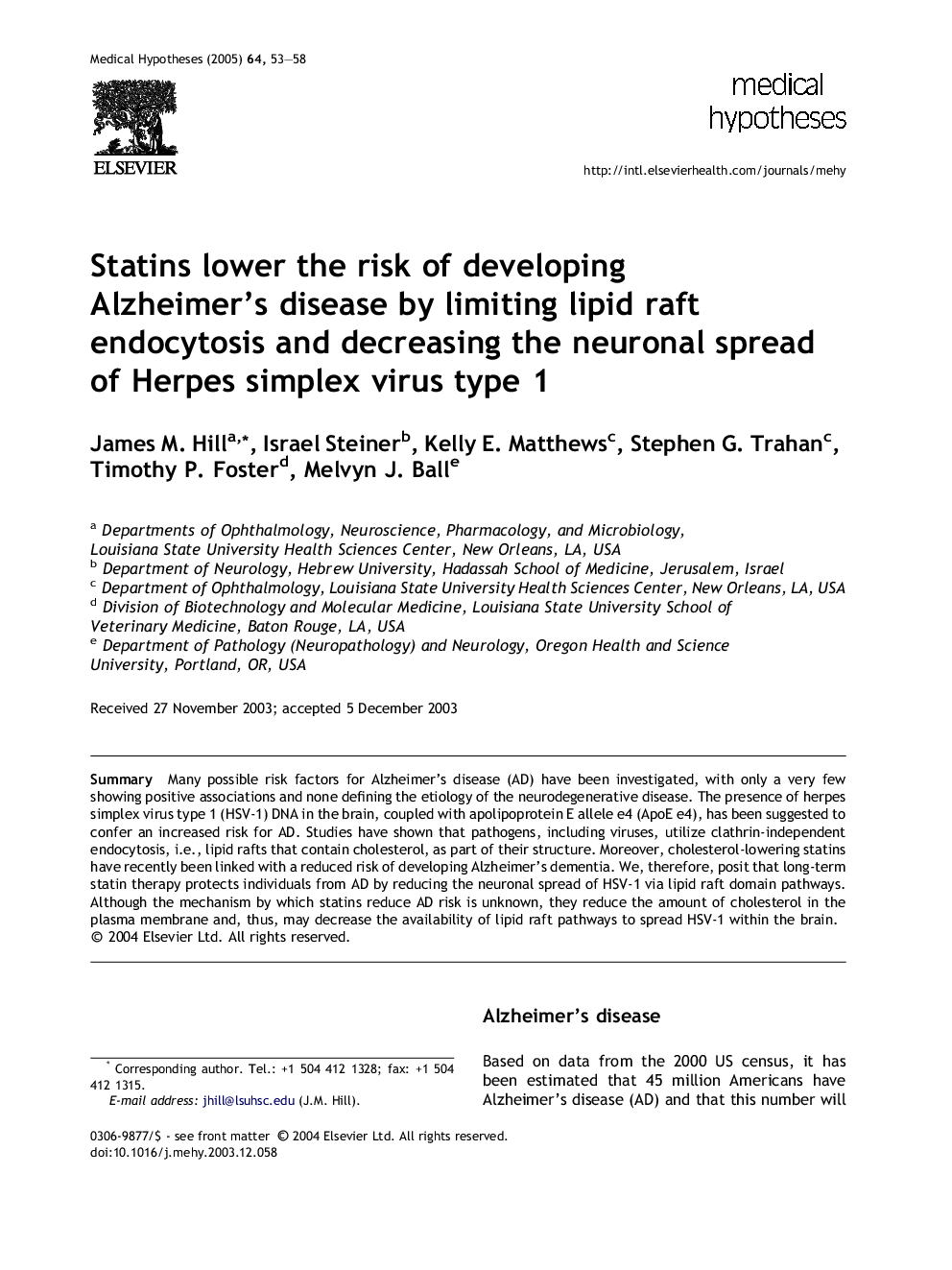| کد مقاله | کد نشریه | سال انتشار | مقاله انگلیسی | نسخه تمام متن |
|---|---|---|---|---|
| 8996879 | 1115144 | 2005 | 6 صفحه PDF | دانلود رایگان |
عنوان انگلیسی مقاله ISI
Statins lower the risk of developing Alzheimer's disease by limiting lipid raft endocytosis and decreasing the neuronal spread of Herpes simplex virus type 1
دانلود مقاله + سفارش ترجمه
دانلود مقاله ISI انگلیسی
رایگان برای ایرانیان
موضوعات مرتبط
علوم زیستی و بیوفناوری
بیوشیمی، ژنتیک و زیست شناسی مولکولی
زیست شناسی تکاملی
پیش نمایش صفحه اول مقاله

چکیده انگلیسی
Many possible risk factors for Alzheimer's disease (AD) have been investigated, with only a very few showing positive associations and none defining the etiology of the neurodegenerative disease. The presence of herpes simplex virus type 1 (HSV-1) DNA in the brain, coupled with apolipoprotein E allele e4 (ApoE e4), has been suggested to confer an increased risk for AD. Studies have shown that pathogens, including viruses, utilize clathrin-independent endocytosis, i.e., lipid rafts that contain cholesterol, as part of their structure. Moreover, cholesterol-lowering statins have recently been linked with a reduced risk of developing Alzheimer's dementia. We, therefore, posit that long-term statin therapy protects individuals from AD by reducing the neuronal spread of HSV-1 via lipid raft domain pathways. Although the mechanism by which statins reduce AD risk is unknown, they reduce the amount of cholesterol in the plasma membrane and, thus, may decrease the availability of lipid raft pathways to spread HSV-1 within the brain.
ناشر
Database: Elsevier - ScienceDirect (ساینس دایرکت)
Journal: Medical Hypotheses - Volume 64, Issue 1, 2005, Pages 53-58
Journal: Medical Hypotheses - Volume 64, Issue 1, 2005, Pages 53-58
نویسندگان
James M. Hill, Israel Steiner, Kelly E. Matthews, Stephen G. Trahan, Timothy P. Foster, Melvyn J. Ball,